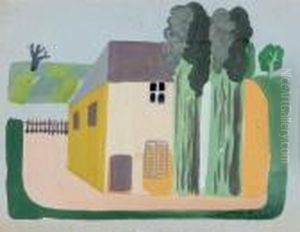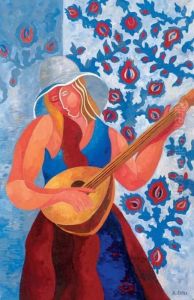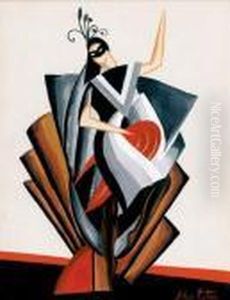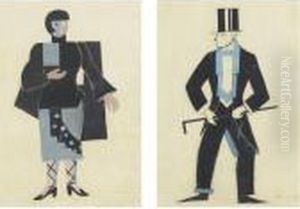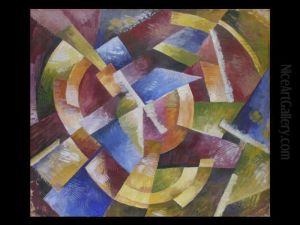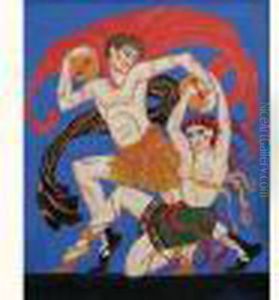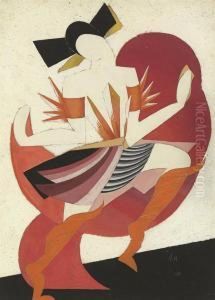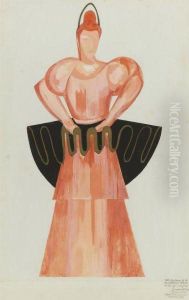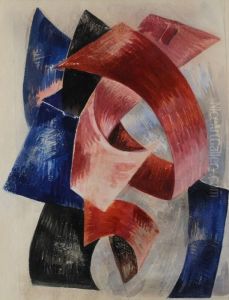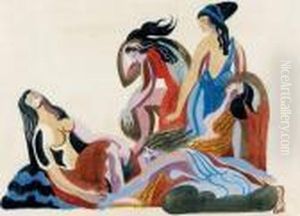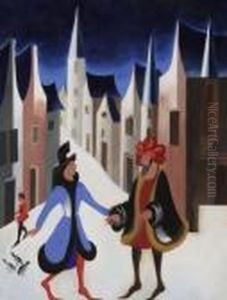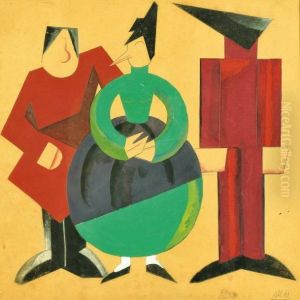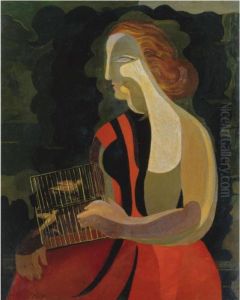Alexandra Alexandrov Exter Paintings
Alexandra Alexandrovna Exter, also known as Alexandra Exter, was a Russian painter and designer born on January 6, 1882, in Białystok, then part of the Russian Empire, now in Poland. She is often recognized as one of the most influential figures in the avant-garde movement during the early 20th century. Exter played a significant role in the development of Cubo-Futurism, Constructivism, and Art Deco.
Exter's artistic journey began in Kiev and continued as she traveled extensively, gaining exposure to the vibrant European art scene. She spent time in Paris, where she became influenced by the works of modern artists like Picasso and Braque. Her own style evolved to incorporate elements of Cubism and Italian Futurism, which she combined with her unique sense of color and form.
During her time in Paris, Exter became deeply immersed in the artistic circles and was associated with many well-known figures of the avant-garde, including Pablo Picasso, Georges Braque, and her close friend Sonia Delaunay. She also collaborated with other Russian expatriate artists and was involved with the Ecole de Paris. Her work during this period included theater designs, costumes, and set designs for plays and ballets, which were particularly notable for their dynamic use of space and architectural elements.
In 1917, Exter returned to Russia and became involved with the Constructivist movement, contributing to the development of non-objective art and design. During the 1920s, she taught at the Higher Artistic and Technical Workshops (VKhUTEMAS) in Moscow, an institution that was at the forefront of Russian avant-garde art and architecture education.
However, political changes and the increasing repression of avant-garde art in the Soviet Union eventually led Exter to leave the country. She moved to Paris in the late 1920s, where she continued to work and teach. Her later work included book illustrations, costume design, and painting, with a continued emphasis on the exploration of abstract forms and theatrical themes.
Alexandra Exter died on March 17, 1949, in Fontenay-aux-Roses, near Paris, France. Despite the challenges she faced, including the political turmoil of her time and the marginalization of female artists, Exter's legacy endures. Her innovative approach to form, color, and movement has had a lasting impact on the development of modernist art, and her work continues to be celebrated in exhibitions around the world.



